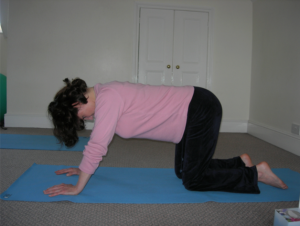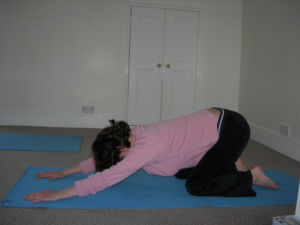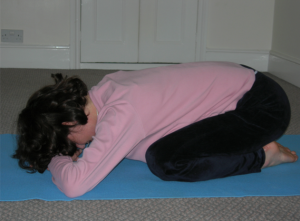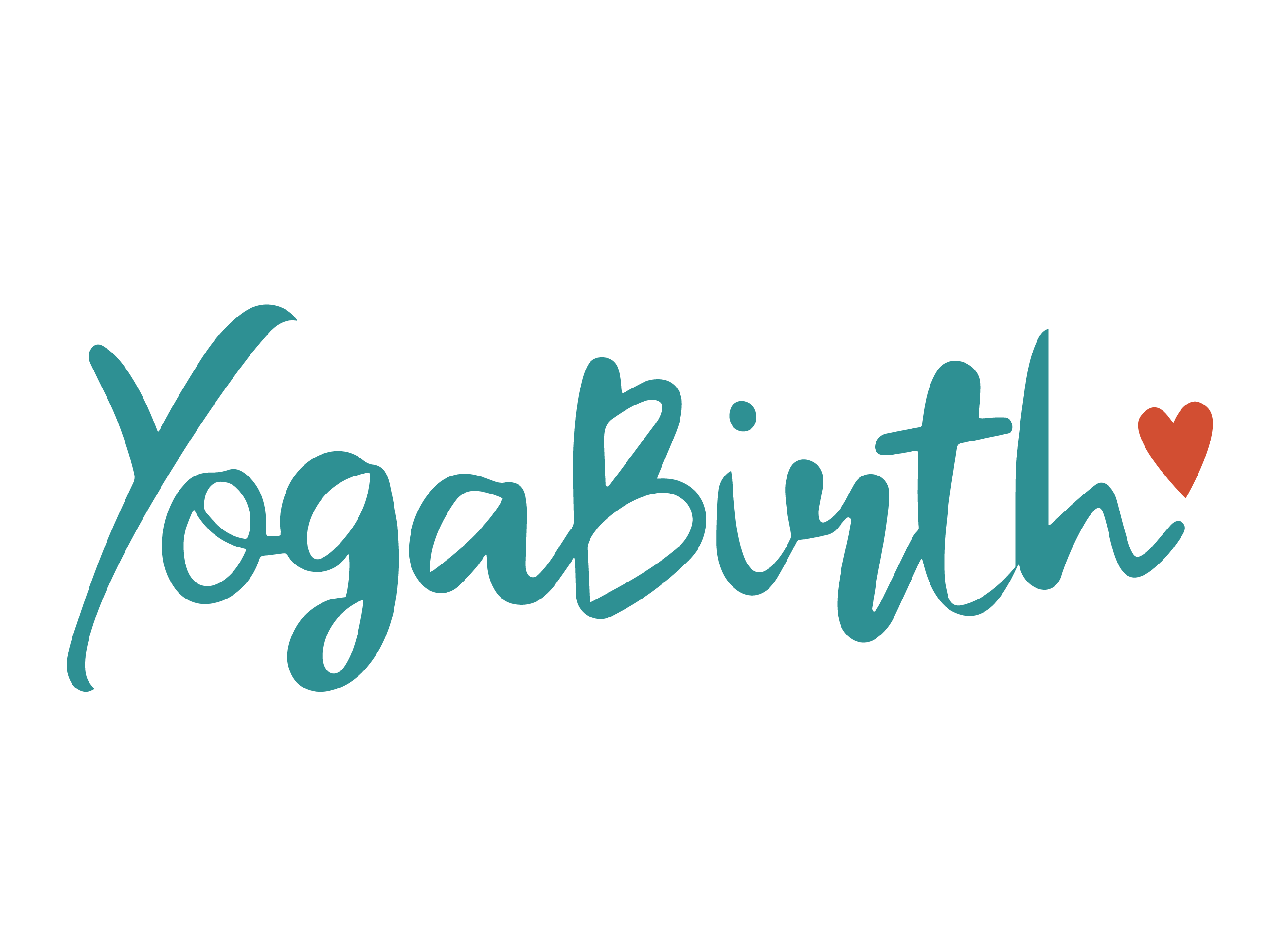This information was put together by Yvonne Moore, YogaBirth teacher and Active Birth teacher trainer for over 25 years. Throughout history women have used herbs to aid childbirth and Raspberry leaf tea is a universal remedy for easing childbirth…Read more

Jill Benjoya Miller discusses the benefits of yoga during pregnancy – with thanks to The Practising Midwife, Britain’s best-selling monthly journal for midwives, where this article was first published.
View article
 Lolly Stirk has been teaching yoga for 40 years in West London. She spearheaded the development of yoga for pregnancy and postnatal yoga in the 1970’s and is the co-founder of YogaBirth – with thanks to Yoga & Health magazine where this article was first published.
Lolly Stirk has been teaching yoga for 40 years in West London. She spearheaded the development of yoga for pregnancy and postnatal yoga in the 1970’s and is the co-founder of YogaBirth – with thanks to Yoga & Health magazine where this article was first published.
View the article
The Birth Ball is a valuable tool, which can help you remain in control during labour. Its unique design provides physical support for you in pregnancy, labour and the postnatal period. It is an excellent alternative to a chair for sitting and can also be used in a dynamic way to practise exercises and positions in preparation for labour. At the same time it induces a sense of calm and relaxation. Working with the ball helps to move your baby into the best possible position prior to and/or during labour. Such a position favours an easier and shorter labour. The beauty of the ball is its simplicity: it is comfortable, fun and easy to use.
How the Ball Works
The ball can be used in many ways but essentially it provides support. For example, when sitting astride the ball, there is no muscle tension because the thighs and perineum are supported by the gentle counter pressure from the ball. The feet are firmly grounded, and the spine will naturally adopt a position of good alignment. At the same time the muscles supporting the spine strengthen over time. Thus the incidence of pain in the lower back and pelvic joints decreases. In addition the ball appears to enhance the tone of the abdomen and support the pelvic floor, already under strain during pregnancy.
Before you Begin
Birthing balls are available in several sizes but the most common is the 65cm, (this is for someone with a height of up to 175 cm or 5 ft.9 ins. which should be inflated to no more than a height of 65 cm or 25.5 inches. Measure 65cm on the wall with a ruler and pump the ball up to this level.
The ball can be inflated with compressed air from a garage. Or with a foot or hand pump, such as you would use for an airbed. The ball should feel firm but give a little when you sit on it. However, it may soften a little over time so remember to check and pump it up again when necessary.
As you sit on the ball, keep your legs open with your feet firmly resting on the ground. Your hips should be significantly higher than your knees with thighs turned in the same direction as your feet. Make sure your knees are directly over your ankles.
Other sizes of ball include (Height, Ball size, Inflation, Height):
- 55 inches (140cm), 42, 42cm, 16.5”
- 61 inches (155cm), 53, 53cm, 21”
- 69 inches (175cm), 65, 65cm, 25.5”
- over 69 inches (above 175 cm), 75, 75cm+, 29.5” +
This ball can support (880 lbs) (62.8 stone) or (400 Kgs) however if the surface of the ball is scratched, cut or punctured or damaged its integrity can be lost and the ball can burst instantly. So balls do need to be cleaned and checked regularly. Cleanse with antibacterial soap/cleansing agent.
Use during Pregnancy
- Kneeling on the floor you can lean your upper body over the ball, either with your back horizontal, or by easing your hips down towards your heels. You can also circle your hips in the more upright kneeling position. This can be a relaxing position to ease backache and it also avoids tension and weight on the wrists. Resting and relaxing in these positions will encourage the weight of your baby’s body to lie forward against your belly. This is important in the last 6 weeks of pregnancy when your baby’s head is attempting to engage in the pelvis. This can help to avoid a “posterior birth” when the baby’s spine lies alongside the mother’s, a birth that can be associated with a longer and potentially backache labour.
- Sitting fractionally forward on your ball, place your feet apart
and allow your bottom to sink into the ball comfortably. This
will enable you to sit with your spine in good alignment,
which can relieve backache and symptoms of heartburn. If
you su er from pelvic pain, the ball can provide excellent
support, relieving discomfort. Just make sure that the feet
are not placed too far apart.
- You can also use your ball to sit at a table or desk. This will encourage good posture and discourage you from crossing your legs, a habit which can work against engagement of your baby’s head as well as reducing the circulation to your legs and aggravate SPD.
- Use the ball as a firm but comfortable support whilst sitting on the floor, during the day or evening watching television, reading etc.
Use during Labour
- Once you have become familiar and comfortable with your ball during pregnancy, you will know how best to use it during labour when the time comes.
- Your birthing partner can massage your lower back during contractions while you are kneeling and resting over the ball.
- Standing and leaning over the ball, either placed on a high bed or against a wall will enlist the help of gravity to encourage your baby to descend.
- Sitting on the ball you can sway and move your hips moving back and forth in whatever way you feel will help to move your baby through your pelvis and birth canal.
- Remember it is easy to get up o the ball and return to it later.
- Kneeling on the floor and leaning over the ball will help the weight of your baby to rest forwards without putting pressure on the major blood vessels (inferior vena cava and aorta). This will improve the blood supply to the uterus and ease the pain of contractions. Note: it is possible to use gas and air (Entonox) while using the ball.
- Using your ball is a comfortable way of feeling supported in labour whereas being on your back could slow down or make your labour more painful.
- Leaning over your ball and rocking helps your baby to turn and drop deeper into the pelvis with increasing flexion of your baby’s head (chin to chest). As labour progresses the back of your baby’s head creates an even pressure on the cervix, enabling e ective dilatation and steady progress.
When you are ready to give birth, you may need a di erent form of support. Your partner can sit on the ball, which can be wedged up against the wall, allowing you to kneel in front with your elbows resting on your partner’s knees.
After the Birth
The First Few Days
- Sitting on your ball can be comfortable, especially if your perineum is sore.
- Sitting on your ball and circling your hips will firm and tone the hip, buttocks, inner and outer thighs and abdomen.
Pelvic Floor Exercises
- The ball provides excellent support when practising pelvic floor exercises.
- Make sure the ball is su ciently inflated so that when you sit on it, the angle between your upper body and thighs is about 100 degrees (slightly more open than a right angle). Your feet should be placed at a similar distance to a squat but with your knees above your heels.
- Next locate the Neutral Position. Roll back gently on to your coccyx until your lower back becomes slightly rounded. Now rock gently forwards until your bottom sticks out a little and your lower back curves inwards. Next move gently back to the midpoint between these two markers. This is the Neutral Position. Allow the buttocks to sink into the ball and elongate your spine in an upwards direction, with the crown of your head leading. Do not overarch the lower back.
- Next take a gentle breath in and as you exhale push your sitting bones down into the substance of the ball without clenching your buttocks or using your leg muscles. Allow the crown of your head to lift at the same time. Once you begin to get used to this, you will experience the pelvic floor working around the back passage.
- Next, take a gentle breath in and then slowly rock forward on the out-breath and observe what is happening to the pelvic floor. The muscles automatically begin to firm around the urethra and vagina. Work with this natural movement as you practise your pelvic floor exercises (see your hospital leaflet).
Other Postnatal Uses
- When you feel stronger you can begin to bounce slowly to improve general muscular strength. N.B. Bouncing would not be recommended if the pelvic floor was still weak. However, gentle bouncing should be possible by six weeks following an uncomplicated vaginal birth.
- Progress to firming your abdominal muscles by sitting on the ball with feet apart. As you exhale, tighten your belly below the navel, starting with your pelvic floor, lifting gently upwards and feeling your stomach becoming firm. Hold for 5 breaths before relaxing the muscles on an in breath. When you find this easy, sit on the ball and ensure that your lower back is not over- arching. Once you begin to feel the lift within the spine, tighten your belly as above and slowly lift one arm. Ensure that your shoulder blades do not lift. Try not to wobble and progress with both arms together and repeat 5 times (floating arms).
- Lie on your back with your legs resting over the ball and your head supported on a folded blanket or a cushion to prevent any arching of the neck. Place your hands lightly on your belly and breathe in slowly. As you breathe out, engage your pelvic floor and lift it upwards, feeling your abdominal muscles tighten gently. Rock your knees very slightly to the right (maximum 2 inches). Pause for a moment and take in a full breath, releasing your tummy muscles. Then, as your breathe out, engage your pelvic floor, lifting to make contact with your deep abdominal muscles before bringing your knees back to centre. Pause once more, breathing softly and steadily before repeating on the opposite side.
- The ball can be used to calm and soothe your baby. Simply sit on the ball with your baby and gently bounce or sway rhythmically. In this way the mother or father can have freedom of movement support to their backs whilst keeping the shoulders more relaxed and is an excellent aid to comforting your baby.
- Some babies gain relief from colic by being placed on their stomach, face down with a firm hand at their back for support. Then gently roll the ball back and forth. The pressure on the baby’s abdomen appears to help with abdominal cramping.
- Siblings love the ball too!
For Midwives
In The same way the ball if properly inflated can bring support and comfort to the spine, the ball can be a useful seat for a midwife attending a home or hospital birth so that she can sit and observe the labouring woman.
YogaBirth 2006
www.yogabirth.org
References
Anderson T. (1998) Me and my birth ball The Practising Midwife September 1998 vol 1 no9 pp38
Johnston J. (1997) Big Balls and Birthing Australian College of Midwives (Victorian Branch) Open Line
Winter 1997 vol 5 no3 pp7
Perez P.G. (2000) Birth Balls: use of physical therapy balls in maternity care Cutting Edge Press
Pucher M. Guide to the exercises with the Original PEZZI ball Ledragomma
Shallow H. (2003) My rolling programme: The birth ball: ten years experience of using the physiotherapy ball for labouring women MIDIRS Midwifery Digest vol 13 no1 March 2003 pp28-30
Stocker Margarethe (2003) Lead Physiotherapist, Royal Cornhill Hospital, Aberdeen
Sutton J. (2001) Let Birth be Born Again Birth Concepts UK
Active Birth is an essential dimension to pregnancy. Many of us are familiar with the concept of Active Birth. To midwives it often conjures up images of women adopting upright positions for labour and birth. To the women and many childbirth educators the concept may spill out beyond the physical, and the implication of becoming active in mind takes on new meaning.
In actual fact the term Active Birth was first coined by Janet Balaskas in the late 1970’s as a then reaction against the highly interventionist management of labour with drugs that had, at the time, become very fashionable within the world of obstetrics. Women frequently gave birth on their backs in order to facilitate the monitoring and procedures surrounding birth. However, many of us forget that until the mid twentieth century – when the majority of births in the UK took place at home – the majority of women gave birth on their left side. Interestingly this is a far superior position within which to give birth – first because it is considerably less painful and second because the statistical chance of tearing is significantly reduced.
I first started to question the whole birth ritual as a student nurse in 1977. I spent 12 weeks in the maternity wing of a general hospital. In the Labour Ward I witnessed births that were highly managed with epidurals and drugs to induce the process – and I also saw women giving birth almost without any help at all. There were the sweetest of midwives caring for them – and there were also the most terrifying. It was the terror that drove me to give up the place I had been offered to do my midwifery training. It would not be for another 24 years before I actually became a midwife.
After many years of working as a nurse, when I became pregnant with my first child I started to practise yoga. This was triggered by Janet Balaskas’ Active Birth Handbook which my best friend gave to me with the recommendation “..this is all you need. Don’t read any other book.” And she was absolutely right. Everything in that book made total sense to me. I practised yoga. I swam. I rested. I went for walks. Everything I did for myself, I did for my baby. In my husband’s eyes I was beautiful – and I felt beautiful. I also felt strong and powerful. I was so happy. And it was in this state of happiness that I went into labour and had what I could only describe at the time as “the most beautiful experience ever”. Not surprisingly I had a similar, albeit much quicker, birth the second time at home – kneeling on the floor, resting my arms over two enormous floor cushions wedged into the sofa.
I could have gone on giving birth over and over because I had enjoyed it so much but instead I decided to train as an Active Birth Teacher with Janet Balaskas . I wanted to be able to pass on this knowledge to other women. The direction I took eventually led me into midwifery and then on to becoming a British Wheel Module Provider for the Pregnancy Module and the YogaBirth Course Director.
Since I first began this work nearly 20 years ago, I have noticed the proliferation of courses in Yoga for Pregnancy, Mindfulness-based childbirth, Hypnosis for childbirth, Hypnobirthing and so on. Indeed I have trained in meditation, hypnosis and HypnoBirthing myself. They are all valid and wonderful ways to prepare for the birth of a new life and I celebrate and rejoice in the fact that there are so many.
All these approaches recognise a dimension to pregnancy and birth that is so often missing in a standard antenatal class. Any yoga teacher in Scotland with a strong commitment to helping women in this wonderfully active way, might like to consider the British Wheel Pregnancy Module which commences in Dundee in June 2014.
Yoga and Active Birth
Practice these every day

Cat Marjariasana/Bidalasana
Free the pelvis with the breath and explore the possibilities of movement

Hare Pose Shashankasana
Exhale into the back of your pelvis and be easy with the space across your sacrum

Child’s Pose Balasana/Pranatasana
As you exhale, allow the active weight of the pelvis to lengthen the spine through from the shoulders, the upper back, the waist – to the tailbone
Be comfortable with the sacred space within yourself
Judy Cameron January 2013


 Lolly Stirk has been teaching yoga for 40 years in West London. She spearheaded the development of yoga for pregnancy and postnatal yoga in the 1970’s and is the co-founder of YogaBirth – with thanks to Yoga & Health magazine where this article was first published.
Lolly Stirk has been teaching yoga for 40 years in West London. She spearheaded the development of yoga for pregnancy and postnatal yoga in the 1970’s and is the co-founder of YogaBirth – with thanks to Yoga & Health magazine where this article was first published.

